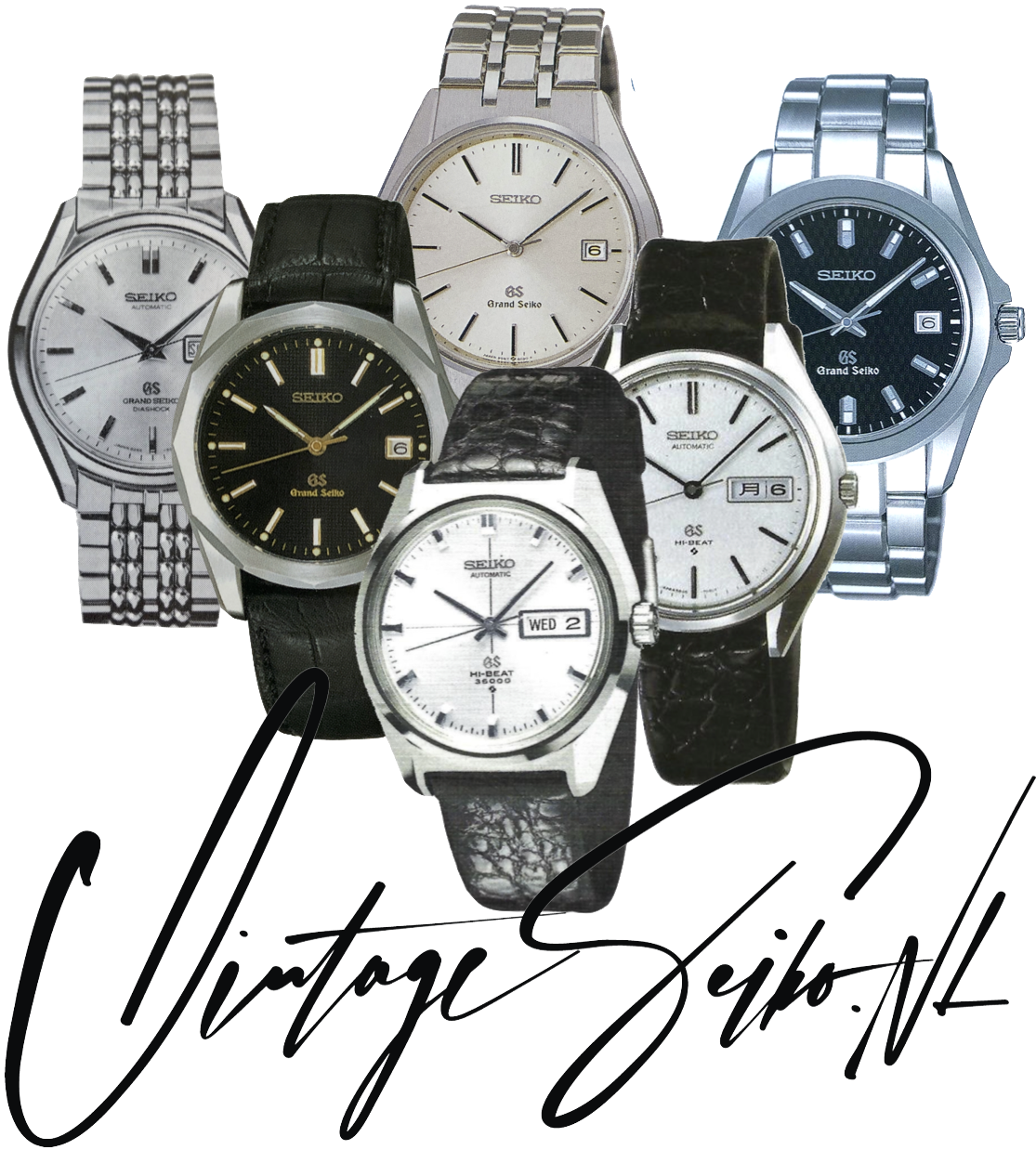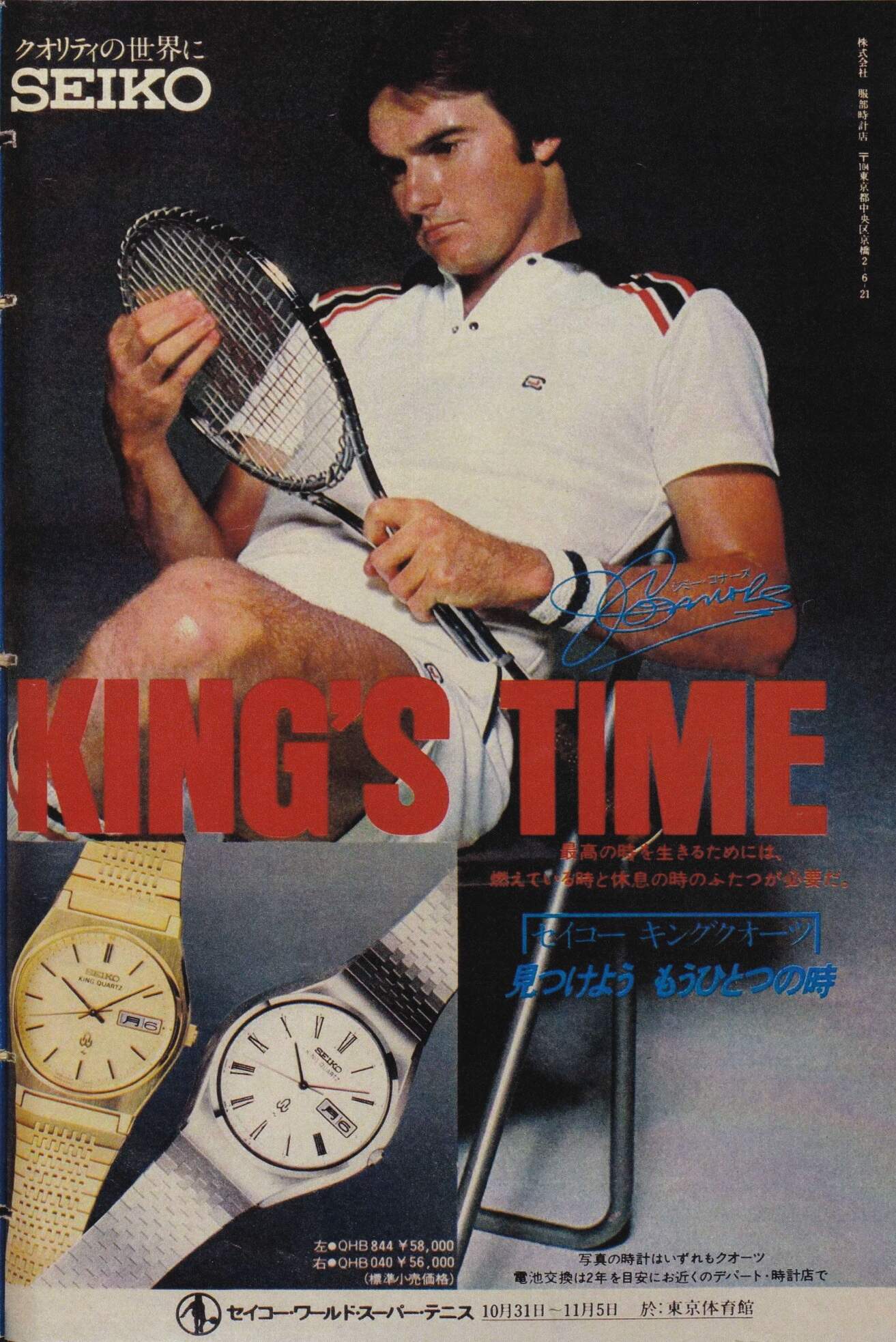A King of Seiko
In 1968, at the last of the Chronometre competitions of the 'Accuracy Observatory Trials at Neuchatel', watches from Seiko's Daini and Suwa factories trumped all what the rest of the world had to offer. In fact, they still do under their Grand Seiko (GS) - High Beat, Springdrive and Quartz - line today. Then, as now, Grand Seiko and their VFA Very Fine Adjusted chronometers were the best of the best, for a reason however not very widely known. The Japanese are very competitive and even more so internally, Daini and Suwa factories were setup to compete with each other and both made Grand Seikos. Only Daini made King Seikos though, sadly a defunct product line since the mid seventies.
Apart from all that, these high end watches were reliable and precise luxury watches without elaboration or decoration, just pure watchmaking raised to the level of an art form further bolstered by Tanaka’s Grammar of design - only the second King Seiko model to do so. To warrant all this Grand Seikos had chronometer certificates and were adjusted to higher accuracy in multiple positions , King Seikos were not certified but did not differ all that much internally.
In 1975 the Grand Seiko line and the King Seiko line ceased production, due to the quartz crises they could not remain profitable. Of course, in 1988, the Grand Seiko line was simply revived with high end quartz watches - neatly tying in with the defunct Grand Quartzes of the early eighties. And finally in 1998, the mechanical GS were re-introduced, one might expect due to popular demand.
King Seiko followed suit fortunately, having been equally succesful with the King Quartz until about 1983. This was somewhat later however, in 2000 a limited edition model was presented as a reissue of the 45KS and only much later in 2021 again to commemorate the King Seiko 44-9990 KSK-020, but with with all modern upgrades.The king never really left the scene, even now vintage quartzes are highly desirable watches and fully the equal of whatever goes for a good quartz these days. However, while quartz based watches are extremely accurate compared to mechanical watches, they are still not perfect. One of the main reasons for the inaccuracy in a quartz model is temperature change... the oscillation of the quartz crystal varies slightly because of this. It will cause the slight drift in timing. To compensate quartz watches will employ some kind of temperature compensation. Enter the Twin Quartz.
The twin quartz evolution
When quartz was well established, at the end of the Seventies, the Seiko 1978 JDM catalogue showed the twin quartz caliber for the first time, however there were (eventually) at least three different design technologies behind the Seiko twin quartz modelsThe five twins
In all five different calibre series were introduced in less than two and a half years, they were used in the Superior, Grand, King and Quartz line ups. The 99 series was first released in August 1978 (specifically the 9983A), the 92 series released in December 1978, closely followed by the 97 series released in October 1979 (9722A, 9723A). Just under a year later the 96 series was released in September 1980 as caliber 9641A and 9642, the latter in the inconspicuous Seiko Quartz - a true wolf in sheep’s clothes. Hot on its heels was the 94 series released in November of 1980 (9441A).Let’s start with the Superior line (above), caliber 9983. This was a movement with an accuracy rating of 5 seconds per year, among the best Seiko has ever produced. At that time, the Grand Quartz line from Suwa benefits from this twin quartz innovation with the twin 9943 and the 9940 caliber - retiring the caliber 4843 that had just been selling for two years (1976-1978). The most expensive models however, are still in the Superior line, with a price tag of 235,000 Yen.
The King Quartz line however with the 482x, 992x, 972x, 922x and 96 caliber, is no slouch here compared to its high rolling brethren.
9721/9722/9723
The 97 series implements twin quartz by using two paired crystals with different thermal characteristics. The temperature variation between the crystals are then averaged to provide accurate measurements over a wide temperature range. By using this method the yearly variation for the 97 series (9721A, 9722A, 9723A) King Quartz models are rated at +-20 seconds per year.
9223
Let’s not forget the 92 series (9223, 9256A) and the 96, there are no specifics on it but as the 92 were rated at +-10 seconds per year these were similar to the 99 series design.
9641
The 96 series were rated at +-20 seconds per year so may have a similar design as the 97 series.
9441/9442/9443
The 94 series King Quartz models were first released in November 1980 (9441A, 9443). These models have the two crystals running at different frequencies, 32kHz and 40kHz. The first model (9441A) was rated at +-20 seconds per year but by April 1981 (surprise) the 9481A was released and rated at +-5 seconds per year and fitted to Superior models. Last but not least, there was the caliber 9442, assigned to the Lassales (described seperateley).
9923
The 9923 was a bit of an odd caliber for the King Quartz, as the base caliber 99 was represented in the Grand Quartz 9940 and in the Superior line 9980/83. Shown to the left is the very refined looking model 8050, of which some color variations were made, like the mahogany striped dial.
On a more general note, Seiko more often than not delivered a surprise caliber that was used in multiple watches. It is hard to tell in which way the base caliber was changed apart from accuracy indications.
The brown or black croc-leather band supplied should have a vintage and Seiko-signed (gold plated) buckle. On catalogues pictures of Grand Quartz, watches have either a GQ-signed buckle or a Seiko-signed one. Sometimes one can see the double honeycomb symbol.
Seiko King Quartzes with one or the two oscillators are interesting watches, the latter I think only from the Daini division. Very accurate too as you might expect of two time sources (crystals) and thermo compensation.

